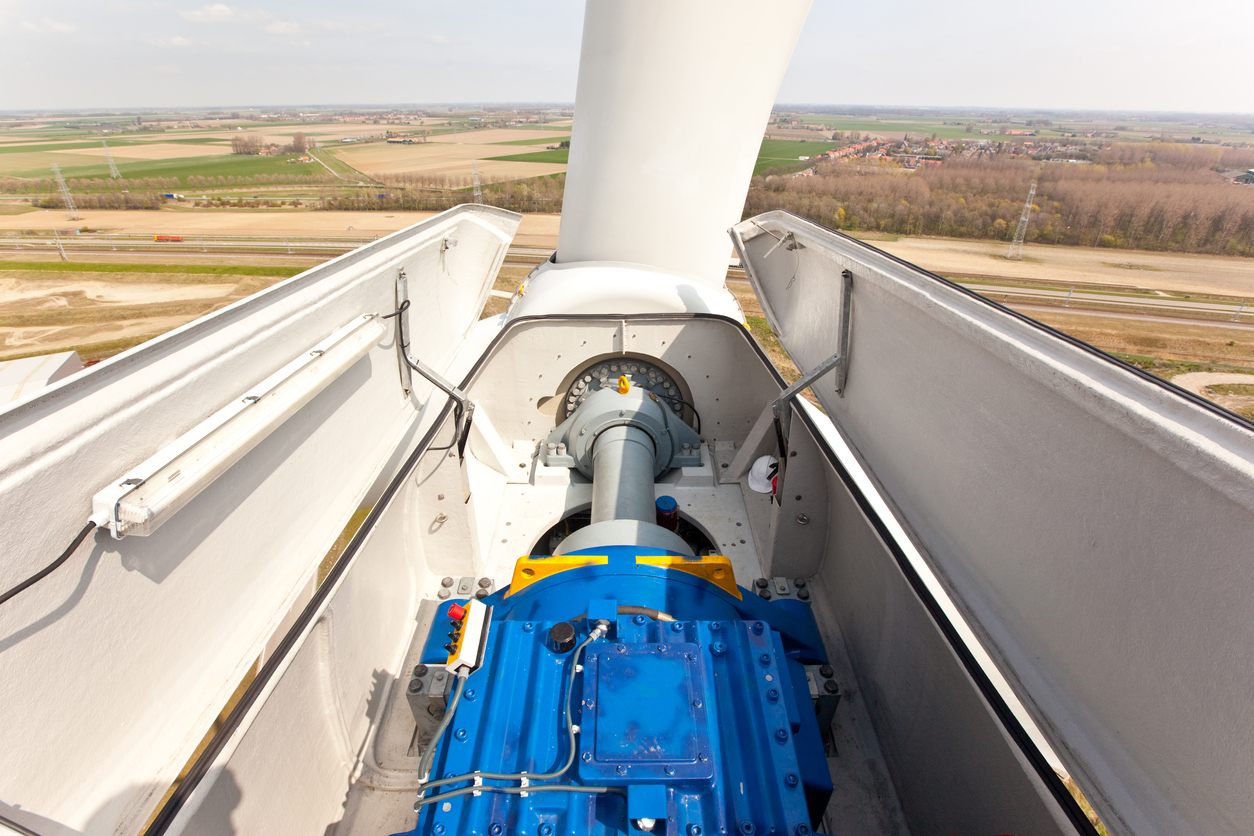Frozen Wind Turbines? Do Wind Turbines Even Work In The Winter?

Wind turbines work in the winter. Of course they do! For some wind farms, the windiest time of the year is during the winter. Certified wind turbines can operate down to -40° without interruption. Turbines operate year-round in Northern regions because they have special design features. These features, (like small heaters for electronics, wind speed sensors, generators and gearbox oil) come at a cost, so wind turbines made for warm climates generally don’t have these features.
But why are some wind turbines occasionally shut down in the winter? The answer will surprise you!
Wind Turbine Icing: Shutdown for Frozen Sensors, Damage Protection, and Safety
Certain types of weather can lead to ice buildup on wind turbine blades and critical sensors, like the anemometer. With each blade over 150 feet long, in some cases the weight of this ice buildup can become extreme and throw the blades out of balance. Here, a turbine would detect a vibration fault and automatically shut itself down to prevent damage. But even if the turbines are capable of running properly in cold weather, conservative wind park operators may shut turbines down anyway - especially in extreme weather conditions. In certain conditions, large chunks of ice can fall from wind turbines that are idle, or even sent flying some distance from wind turbines that are operating! Falling pieces of ice can be lethal, so turbine parks will sometimes stop power production if icing occurs for safety reasons alone.
The Southern Freeze
The Southern United States is currently experiencing the coldest winter in decades; a blanket of snow lies across the Texas Hill Country. Pipes are freezing and thousands of people are without power. Auxiliary heaters are sold out in stores. Thermostats are naturally being dialed up everywhere.
Generally, Texans don’t use a lot of energy for heating. Natural gas is a preferred method of heating in the Northern states, but since demand for heating throughout the winter in the South is low, electricity is a cheap and reliable option.
Rolling Blackouts
This leads to some drastic demands on an electrical grid, which can escalate to rolling blackouts. But, when the power is out, it can present some…complications. Couple this with cheap electricity and it’s easy to see why electric heat a common installation in southern regions, where natural gas is generally preferred in the North. As a result,
Texas Power Outage: Partially Due to Electricity Prices
According to the US Energy Information Administration, in 2020 Texas electricity prices ranked 9th in the nation.
Overall power prices in Texas are the 9th lowest in the country. This includes residential, commercial industrial, and commercial power prices. Some commercial and residential HVAC units run on gas, but the upfront cost is higher and low usage throughout the winter makes it tough to recoup those costs. As a result, almost all commercial rooftop HVAC “package units” are electric-only. These types of heating elements are among the largest energy users on the grid and their use corelates directly with low temperatures. Grid demand becomes high and rolling blackouts can occur.
Where Does Texas’s Electricity Come From?
[caption id="attachment_2736" align="aligncenter" width="706"] Source: ERCOT 2020 Demand and Energy Report[/caption]
Frozen Gas Lines
Natural gas makes up 46% of Texas’s electricity production. In extreme freezing temperatures, southern gas companies begin shutting down wells, pipelines, and generation equipment due to freezing lines and wellheads.
Texas is the USA’s Wind Power Generator
Everything is bigger in Texas, and as such, Texas generates a large amount of electricity for the Southern USA, with nearly double the net generation of the number two state, Florida. Texas is the largest wind power generator in the country, producing as much wind energy as Iowa, Oklahoma, California, and Kansas combined. If Texas were a country, it would rank 5th in the world for wind generation!
Distributed Generation
Electrical grid safety shutdowns for wildfires are now common in California. With blackouts occurring whenever winds are too high to safely operate power distribution lines. Californians in this region are already seeing the power of distributed generation through wind and solar installations that are now frequently being paired with battery energy storage. With the latest certified power electronics, distributed energy generators can dispatch electricity to compensate for grid demand. Distributed generators are things such as solar (when the sun shines), wind turbines (when the wind blows), battery storage (reliable!) or even diesel generators! When the grid contains distributed energy generation, it becomes resilient against effects from weather and demand.
Distributed Wind Energy
The Distributed Wind Energy Association (DWEA) supports a vision of energy equality, where individuals, businesses and communities alike are empowered by the Distributed Energy Resources that exists around them, especially wind. Distributed Energy Resources of all types are necessary to provide a diverse, resilient, responsive electrical grid. Winter winds can provide a great energy source to meet demands for electric heating, particularly in Texas. Localized icing and other weather events can always curtail production, but wind sites stretching across a larger region can continue to produce power.
For this reason, having a wide site distributions of wind turbines is essential for a reliable, clean, and robust electrical grid. Distributed Wind Energy means every site with adequate wind should have an appropriate wind turbine. This distributes power generation throughout the grid and makes it more resilient. Apply this with solar, battery storage, and smart demand-response inverters and you have the electrical grid of tomorrow. Distributed Wind turbines in the right place at the right time will pay for themselves by generating low-cost power that can be consumed locally or sold back into the grid through the standard electrical meter.
A study by the National Renewable Energy Lab concluded that the total electrical generation potential for distributed wind sites is about equal the total for offshore wind. The Distributed Wind Energy Association is focused on ensuring these prospective distributed wind sites have access to technology, funding, regulation, and support in regions across the entire United States. Windurance stands with DWEA in this vision and supplies blade pitch actuators, inverters and controllers to the distributed and utility-scale wind industry.
If you’d like to hear more about how distributed wind is the wind generation tactic of the future, contact us!
Note: The author, Dan Clunies, is a Petroleum Engineer who worked ten years in the drilling industry while living in Houston. On his days home from the rig, he worked as a crane operator servicing rooftop HVAC units. He now lives in Pittsburgh and works for Windurance.



